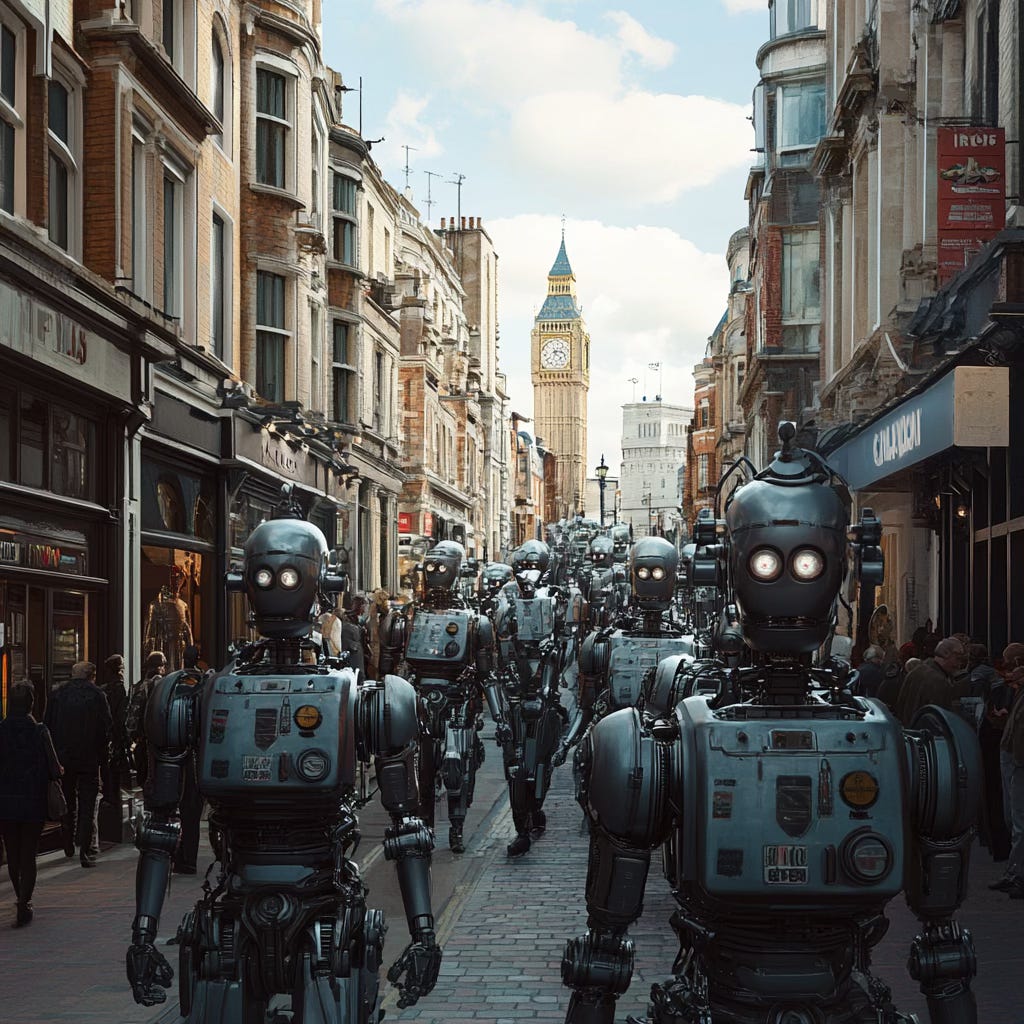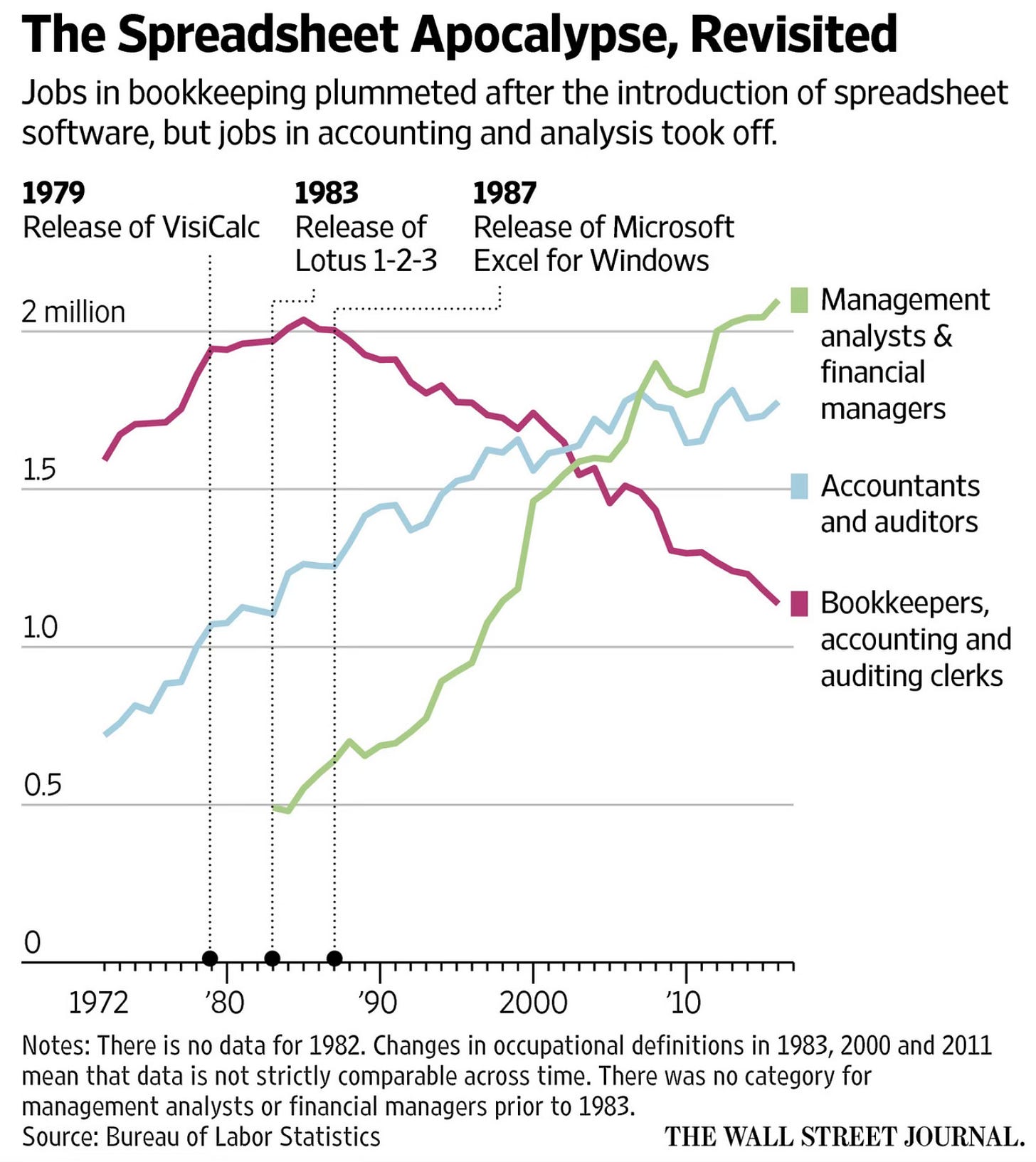Do we really need to fear AI?
Five charts to start your day
The UK is a funny old place. It’s not foreigners that are going to take our jobs; it’s artificial intelligence. Scary, right?
But if we look at history and economics, we see that when something becomes cheaper and easier to do (like using energy, communicating, or doing calculations), we actually find more uses for it. Some jobs disappear, but others become more important, and often completely new jobs are created.
The Wall Street Journal did a really good case study on this. They picked the arrival of the spreadsheet in the 1980s. Now, please don’t collectively yawn; there is a point here.
Previously, working with lots of numbers (like figuring out how interest rates affect a company's profits) was slow and, quite frankly, very boring. It was easy to make mistakes. Then along came the personal computer and programs like VisiCalc, Lotus 1-2-3, and Microsoft Excel. We’re talking about the mid-1980s here.
This new technology hit the bookkeeping industry hard, and many bookkeepers lost their jobs. In fact, since 1985, there has been a 44 percent decline in the number of bookkeepers hired. Check out the chart below.
These new software programs, like Excel, became very valuable. In fact, they created a lot more jobs. For instance, since 1985, there has been a 41 percent increase in the number of accountants and auditors. Jobs like financial managers and management analysts, which weren’t even tracked before 1983, have grown almost fourfold. The spreadsheet made these jobs much more dynamic and useful for companies.
And so, just like spreadsheets made calculations cheaper and increased the demand for more complex calculations, AI could do the same in many other fields. AI may not just create new jobs; it could make existing jobs more interesting. Moreover, it might also help improve productivity and increase economic growth.
Source: The Wall Street Journal
Coming up:
Private investment made in AI
AI patents by application and region
Who in the manufacturing sector will be hurt from AI
Parameters in notable artificial intelligence systems
If you like the sound of that line up, this is usually a paid newsletter. You basically get all my best ideas daily. Hit the subscribe button if you are interested and this will be sent to your inbox daily.




